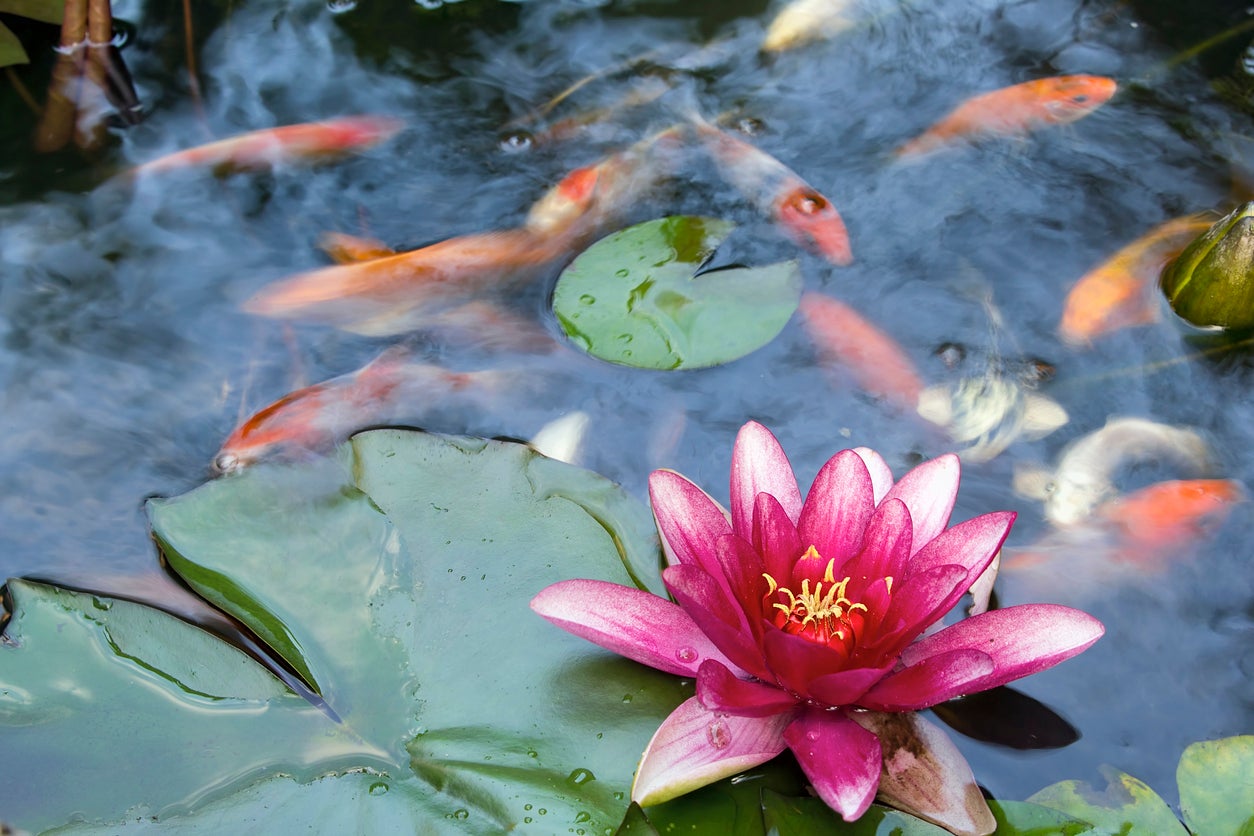Koi Fish And Plants – Choosing Plants Koi Won’t Bother


First-time koi pond enthusiasts may have learned the hard way that koi love to browse the plants and roots of pond vegetation. When introducing koi into a pond already established with plants, the browsing may be manageable. But plants added to a pond already filled with koi can be problematic. Koi cannot resist the temptation to eat newly arrived plant delicacies.
What’s a pond owner to do? Keep reading to learn more about how to keep plants safe from koi fish.
Koi Proofing Pond Plants
Koi pond owners do have options regarding the plant decimation. Some enthusiasts simply eliminate plants from the pond, opting instead to landscape the perimeter of the pond only. However, in locations with warm summers, plant cover is essential in keeping water temperature lower and koi comfortable. Plants also provide hiding and spawning areas and assist with filtration.
Maintaining a number of diverse plants in the pond, including surface, emerging, and submerged plants, may prevent widespread foraging damage by koi. Consider a plant such as coontail planted at the bottom of the pond with its roots covered with rocks for protection. For plants with roots below water level and foliage above water, such as water lilies, koi may nibble the roots. Plant them in oversized containers topped off with gravel.
If you add plants to a koi pond when the fish are already present, it is best to add a group of plants at once, rather than one or two at a time. That way, no one plant is quickly consumed by curious koi.
Some pond enthusiasts keep plants safe from koi by enclosing pond plants in a cage-like structure. Materials such as PVC coated wire, plastic mesh, or net are ideal. For floating plants, make a cage that floats. You could even try a floating wetland if your backyard pond is large enough.
Another option is to research plants koi won’t eat. Suggestions include the floating-plant water lettuce, the large-leaved lotus plant, the yellow-flowered water poppy, and the eye-catching umbrella plant. Koi tend to ignore these plants in favor of more palatable choices.
Sign up for the Gardening Know How newsletter today and receive a free copy of our e-book "How to Grow Delicious Tomatoes".
Another tip: Try feeding the fish several small meals a day to help divert their penchant for vegetation.
Taking care to choose the right kind of plants, protecting their roots with gravel, maintaining ample vegetation, and enclosing plants with cages can help your koi coexist with greenery.

After graduating from Oklahoma State University with a degree in English, Susan pursued a career in communications. In addition, she wrote garden articles for magazines and authored a newspaper gardening column for many years. She contributed South-Central regional gardening columns for four years to Lowes.com. While living in Oklahoma, she served as a master gardener for 17 years.